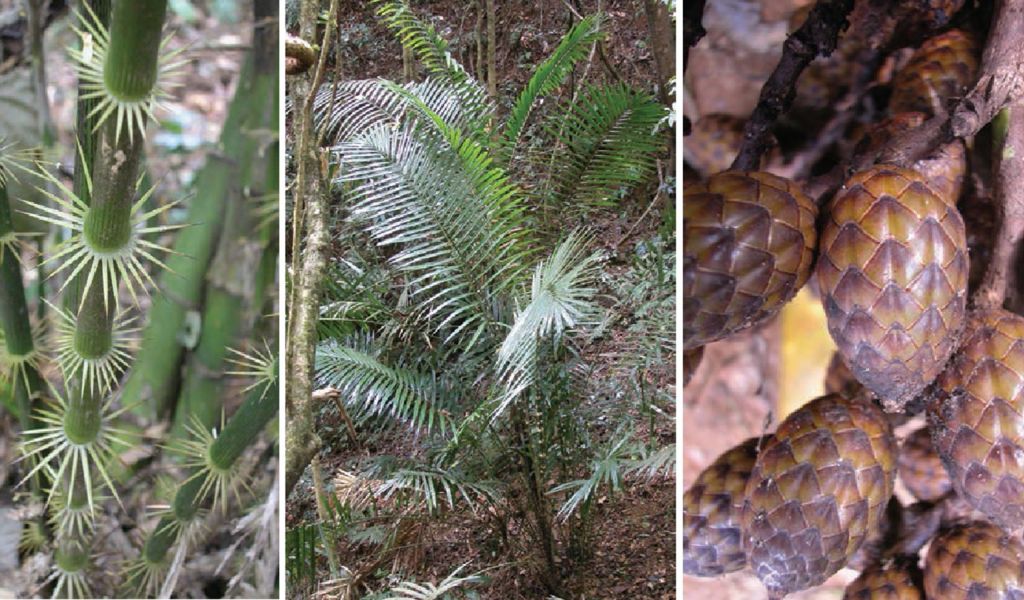ຫວາຍໜາມໄຊ / Erect Stem Rattane
APA 6th ed. ຫວາຍໜາມໄຊ / Erect Stem Rattane. (2021, February 26). Retrieved from https://www.phakhaolao.la/kb/0000139
MLA 8th ed. ຫວາຍໜາມໄຊ / Erect Stem Rattane. Pha Khao Lao, 26 February 2021, https://www.phakhaolao.la/kb/0000139.
Chicago 17th ed. Pha Khao Lao. 2021. "ຫວາຍໜາມໄຊ / Erect Stem Rattane." Published February 26, 2021. https://www.phakhaolao.la/kb/0000139.

Calamus erectus var. birmanicus Becc.
Calamus erectus var. collinus (Griff.) Becc.
Calamus erectus var. erectus
Calamus erectus var. macrocarpus (Griff. ex Mart.) Becc.
Calamus erectus var. schizospathus (Griff.) Becc.
Calamus macrocarpus Griff. ex Mart.
Calamus schizospathus Griff.
Palmijuncus collinus (Griff.) Kuntze
Palmijuncus erectus (Roxb.) Kuntze
Palmijuncus macrocarpus (Griff. ex Mart.) Kuntze
Palmijuncus schizospathus (Griff.) Kuntze
Description. Stems clustered, non-climbing, free-standing or sometimes leaning, to 6 m long and 5 cm diameter. Leaf sheaths dark green with dark brown hairs, with short rows of brown, flattened, to 3.5 cm long spines; ocreas present, with rows of short spines, split into two, soon falling; knees absent; flagella absent; petioles to 190 cm long, with whorls of yellow spines; rachis to 3 m long with to 40, lanceolate leaflets per side, these regularly arranged, bristly along the margins; cirri absent. Inflorescences to 2 m long, not flagellate; bracts tubular, tattering at the apices; fruits ellipsoid, to 5 cm long and 2.5 cm diameter, greenish- or reddish-brown. Distribution and habitat. Northern and central Laos (also in Bangladesh, Bhutan, China, Northeastern India, Myanmar, Nepal, and Thailand) in lowland evergreen, montane forest, or deciduous forest, usually on steep slopes, to 1,400 m elevation. Flowering and fruiting. Flowers February; fruits March, April. (M. Peters & A. Henderson, 2014).
Uses. Provides a short, thick, non-flexible cane used in construction and furniture making.
